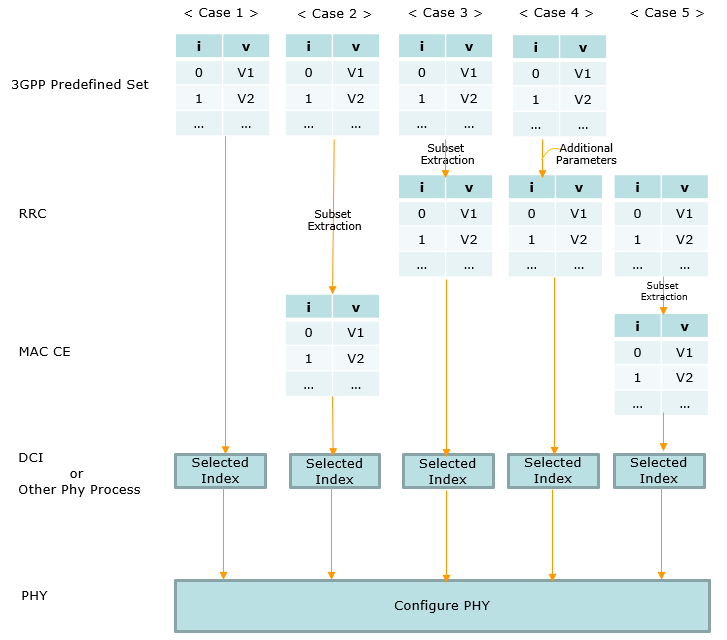|
PHY Parameter Structure
As everybody knows, 5G/NR is very complicated technology. In learning any kind of complicated topics, usually we take approaches in two different directions. Simply put, one is top-down and the other one is bottom-up. In other words, one is from the details to big picture and the other one is from the big picture to the details. Which way to take would be up to person and even for the same person the approach would vary depending on the specific topics. Whichever approach you take, you
should get both big picture and the details eventually.
This note is to show an example of my own big picture on how 5G/NR PHY layer are configured in terms of parameter settings.
You may or may not agree with this picture. If you agree, take a little bit of closer look at this structure. If you don't, it is completely OK. However, I strongly suggest you to try to draw your own big picture if you don't agree with my flow diagram. Even if yours may be completely different from mine, it will definitely help with understanding NR details.
My view on NR physical layer parameter structure is as shown below. The configuration of physical layer at each and every slot at baseband point of view is done by DCI. It means the direct interface to physical layer is DCI, but the DCI interacts with various higher layer components depending on cases. Depending on how DCI interact (is correlated) with higher layer component, I classify them into several cases as shown below.

< Case 1 > is the case where a lot of detailed configuration is defined in the form of big tables in 3GPP documents and DCI points to a specific index value of the table. In this case, it would seem that higher layer (RRC, MAC CE) does not directly (explicitely) get involved in the contents of DCI. Most case of LTE PHY configuration would belong to this case. In NR, Antenna Port (SISO, MIMO configuration) would
belong to this category.
To be very
specific, in NR antenna port case, RRC is implicitely(indirectly) involved in this process via DMRS configuration, but from high level point of view I think I can categorize it into this case.
< Case 2 > is the case where a wide range of tables are specified in 3GPP specification and a subset of those tables are listed in MAC CE and then DCI select a specific index from MAC CE for each slot configuration.
< Case 3 > is the case where a wide range of tables are specified in 3GPP specification and a subset of those tables are listed in RRC and then DCI select a specific index from RRC for each slot configuration. I think CSI PMI and codebook setting can be categorized into this category. Wide varieties of PMI tables are defined in 3GPP specification as summarizied here, and RRC specifies
a subset of tables in
ASN as shown here. Another example would CSI RS configuration. In this example, 3GPP specification defines a big table as shown here and RRC select a specific row from the table as shown here, and physical layer process generate CSI RS as RRC specifies.
< Case 4 > is the case where a table(s) is defined in 3GPP and RRC extract a subset from this table and put them togather with some additional parameters as a new table. One famous example for this case is pdsch-TimeDomainAllocation, pusch-TimeDomainAllocation. In this example, 3GPP specification defines a table for SLIV and RRC creates a new table called pdsch-TimeDomainAllocation, pusch-TimeDomainAllocation which is made up of a subset
of SLIV table and
additional parameters (i.e, K0, K2) as shown here.
Reference
[1]
|
